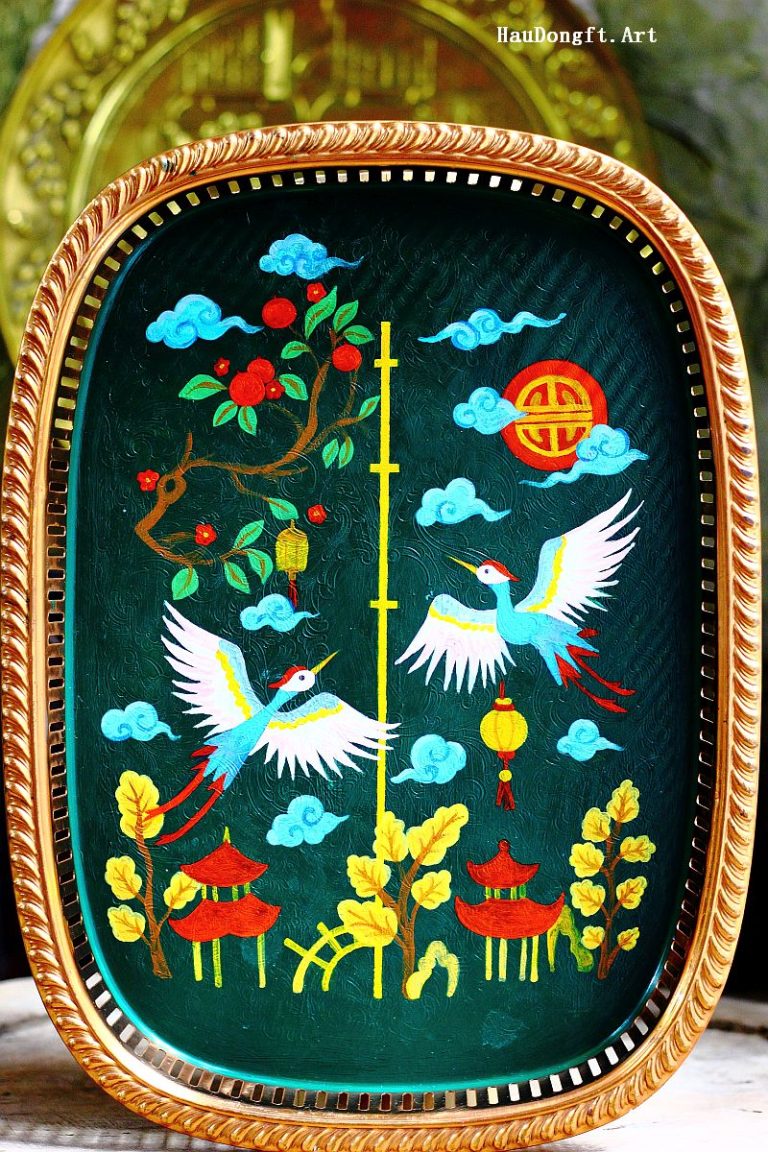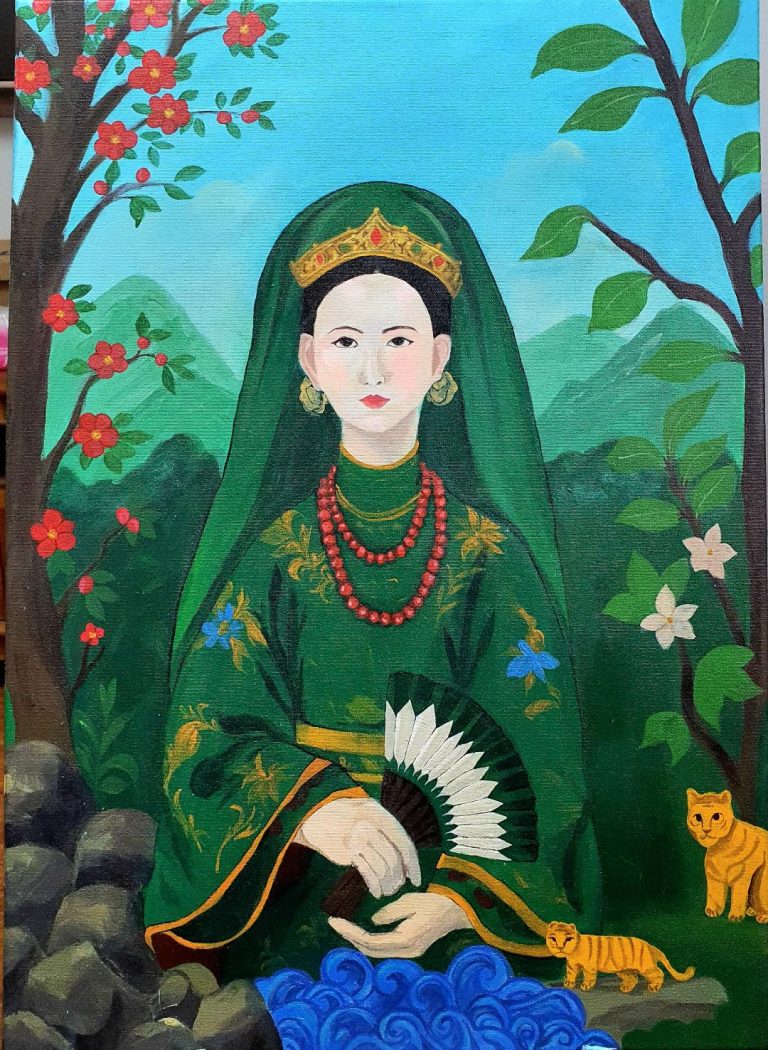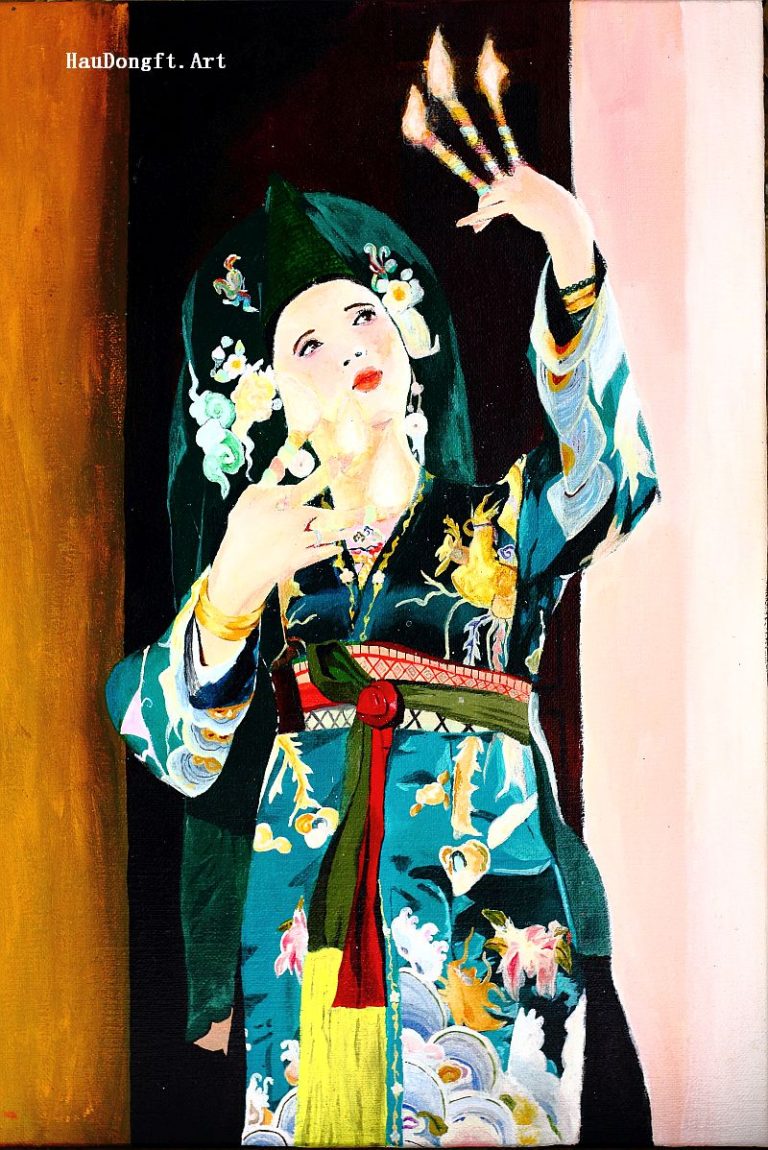
1. Origin
Dance is created to serve human needs and to reflect human life. Generally, dance in Vietnam has either folk or courtly origins, corresponding to the cultural and spiritual demands of the common people or of the aristocracy. Lên đồng dance derives from folk traditions and from the needs of the people. Vietnamese peasants historically had many needs: productive labor, entertainment, and spiritual practice. Each of these gave rise to distinct dance genres with their own expressive styles. Lên đồng dance, in particular, arises from spiritual needs. Vietnamese spiritual life is highly diverse, encompassing the worship of both ancestors and numerous natural and historical deities. Each deity is associated with specific ritual dances. For example: Xoan dance is tied to the cult of Princess Xuân Dung, daughter of the Hùng kings. Dô dance is linked to the worship of Tản Viên, a general under King Hùng Duệ, celebrated for resisting the Thục invaders. Dậm dance recalls the feats of Lý Thường Kiệt. Ải Lao dance forms part of the Gióng Festival. Fertility dances, including the phallic nõ nường dance, reflect the wish for agricultural and human reproduction, performed with bamboo and areca props symbolizing male and female generative organs. Similarly, lên đồng dance emerges from the worship of Mother Goddesses within the Tam Tứ phủ belief system. The cult reflects the profound role of mothers—both natural and human—in creation, protection, family, production, and national defense. To embody this faith, the Vietnamese created complex rituals and festivals. Within these, dance depicts deities and their legendary deeds, while also acting as a medium of communication between humans and the divine. Because of its folk origins, lên đồng dance incorporates many elements from folk repertoires such as rowing, flag-waving, sword play, fan dance, weaving, and embroidery. These movements, drawn from everyday labor and communal life, retain the typical qualities of folk dance: symbolism and stylization. Functions Dance in general, including lên đồng dance, serves multiple functions: reflecting reality, educating, entertaining, and providing spiritual experience. Reflection of social reality: Agricultural labor is depicted through rowing or weaving dances, while military defense against invaders is represented in sword and saber dances of the Quan or Chầu spirits. Historical and cultural memory: Many dances preserve the legacy of national heroes (e.g., Tản Viên, Hai Bà Trưng’s generals, Lý Thường Kiệt) and illustrate intercultural exchange between the Kinh majority and minority groups such as the Tày, Nùng, and Mông. Entertainment: The beauty and enchantment of dance enhance ritual aesthetics and excite the attending community. Spiritual function: This is the defining feature of lên đồng dance. Like shamanic dances worldwide, it combines movement, music (chầu văn), incense, alcohol, and ritual paraphernalia to induce trance. In such states, mediums are believed to embody the deities themselves. The dances thus become divine performances, expressing the identities and achievements of the gods and goddesses.
2. Genre and Form Genre Lên đồng belongs to the category of sacred religious dance.
Vietnamese dance broadly encompasses three types: folk, courtly, and sacred/religious. Sacred dances are performed in rituals, by ritual specialists or devotees, with religious intent. The sacred quality of lên đồng dance is manifested in several dimensions: 1. The performer (medium) undergoes ritual purification—abstaining from sex, certain foods (e.g., dog meat, shrimp paste), and garlic—before the ceremony, paralleling the practices of ritual dancers such as the ông Bóng in Cham Rija Nưga festivals. 2. The space is sacred: temples and shrines dedicated to Mother Goddesses, filled with incense, prayers, and votive music.
3. The ritual framework: dance occurs within the sequence of invocation, possession, performance, prophecy, and departure of the deity.
Unlike many religious dances, which are simply human offerings before deities, lên đồng is perceived as the dance of the deities themselves, embodied through the medium. Devotees address the dancer not as a human performer but as the incarnate deity—“Chầu dances beautifully,” not “the medium dances beautifully.” Form Lên đồng dance is typically solo and improvisational. Each spirit possession (giá đồng) corresponds to a specific deity, hence only one performer embodies and dances for that deity. While structural frameworks exist for each of the 36 canonical spirit descents (e.g., rowing for Princess Bơ, sword dance for Quan Đệ Ngũ), the actual performance allows for considerable improvisation, influenced by the medium’s temperament, the accompanying chầu văn music, audience response, and the medium’s spiritual calling (căn quả).This improvisational quality distinguishes lên đồng from other Vietnamese folk dances with rigidly defined choreographies. As a result, the same deity’s dance may vary greatly between rituals, temples, or even successive performances by the same medium.Conclusion Lên đồng dance is a sacred solo form within the Mother Goddess worship system of Vietnam. It integrates folk elements while transcending them through its spiritual function: to embody deities and facilitate communication between humans and the divine. Its origins lie in popular spiritual needs; its functions encompass social reflection, cultural transmission, aesthetic pleasure, and above all, religious mediation. As such, lên đồng dance exemplifies both the vitality of Vietnamese folk culture and the distinctive role of sacred performance in sustaining national spiritual traditions.










© 2025 Hau Dong Featuring Art. All rights reserved. Contact